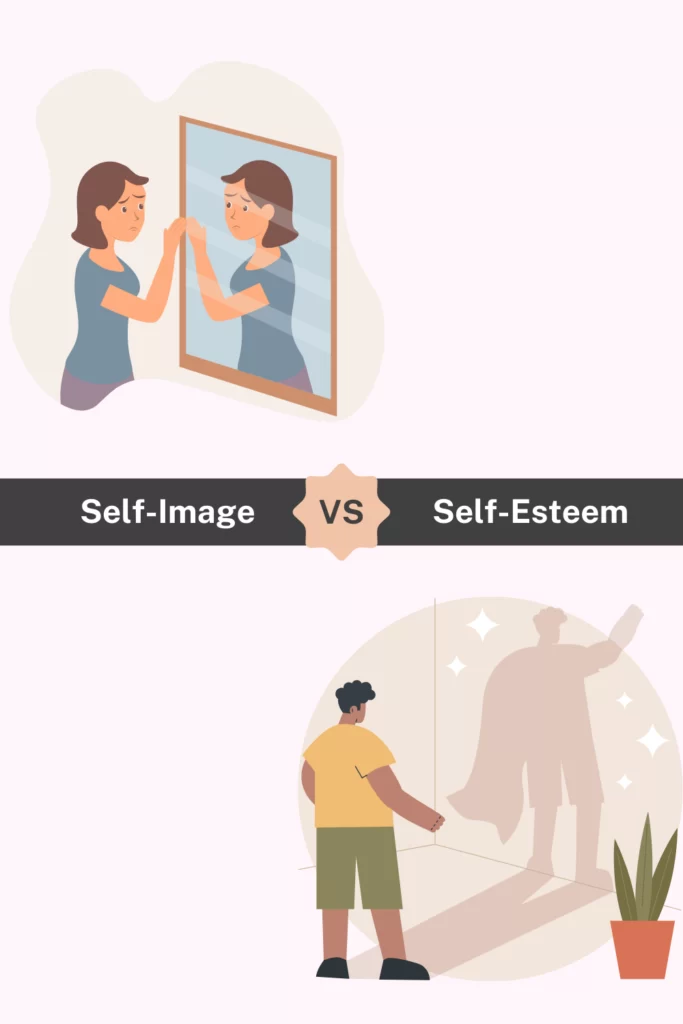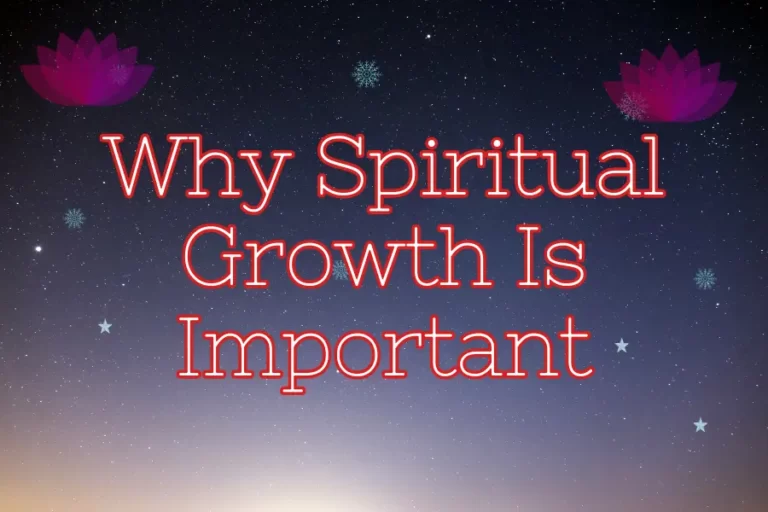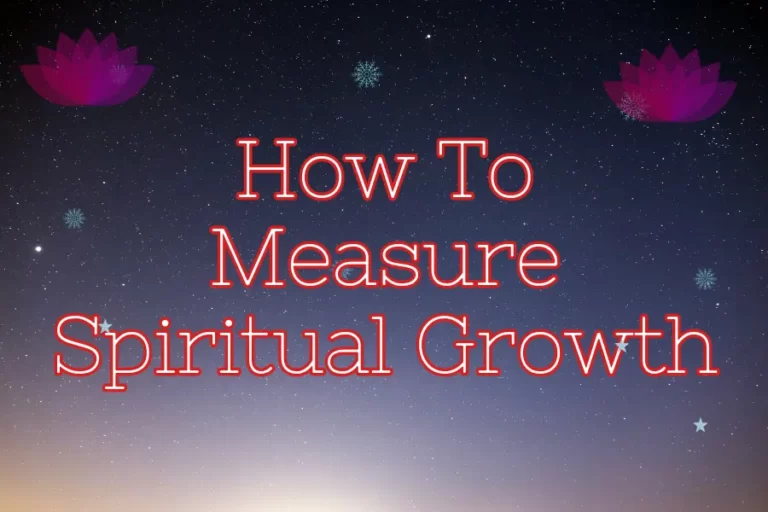What Is The Difference Between Self-image And Self-esteem
Self-image and self-esteem are concepts often used interchangeably, but significant differences exist. Understanding these differences can provide meaningful insights into seeing and evaluating ourselves.
This article will examine self-image and self-esteem, the critical differences between the two, and why those differences matter.
What is Self-Image?
Self-image refers to the mental picture we have of ourselves. It encompasses our perceptions of our physical appearance, personalities, capabilities, values, and behaviors. In other words, self-image is how we would describe ourselves to others.
Self-image has several key components:
- Physical self-image: – How we perceive our physical attributes like height, weight, attractiveness, fitness level, etc.
- Social self-image: – How we view ourselves with others. This includes our perceptions of popularity, social skills, likability, and social groups we identify with.
- Emotional self-image: – How we see ourselves regarding our emotions, moods, and ability to regulate and express feelings healthily.
- Academic self-image: – Our perceptions of ourselves as students and our intellectual competence.
Self-image can be positive or negative. People with positive self-images see themselves as capable and worthwhile.
Those with negative self-images tend to focus on flaws or limitations. Our experiences and interactions with others influence our self-image. Feedback from parents, friends, teachers, and peers shapes self-image, especially in childhood and adolescence. Traumatic events or persistent negative messaging can damage self-image.
Negative Self-Image in Examples:
- Seeing yourself as unattractive, even if others disagree
- Believing you are socially awkward or unpopular
- Feeling like an intellectual fraud or imposter
Positive Self-Image Examples:
- Recognizing your physical health and fitness level
- Seeing yourself as a good friend
- Acknowledging your skills and talents
What is Self-Esteem?
Self-esteem refers to a person’s overall subjective evaluation of their worth. It is the extent to which we approve of and value ourselves.
Self-esteem is based on two key components:
- Competence: – Our assessment of our abilities and talents. It includes how we rate our performance across different roles, domains, and challenges.
- Worthiness – How much we believe we deserve respect, love, and success. It includes our fundamental sense of deservingness and belonging.
High self-esteem means we have an overall positive attitude toward ourselves and see ourselves as capable and worthy. Low self-esteem refers to underlying feelings of self-doubt, inadequacy, and unworthiness.
High Self-Esteem Examples
- Feeling confident in your ability to learn new skills
- Believing your needs and opinions deserve to be heard
- Taking pride in your accomplishments
Low Self-Esteem Examples
- Being extremely self-critical over minor failures
- Feeling like an imposter when you succeed
- Letting others take advantage of you
Unlike self-image, which can fluctuate, self-esteem refers to our ingrained beliefs about self-worth. However, some experiences may temporarily impact self-esteem, like a tragedy causing someone to question their worth.
Self-esteem develops over time, shaped by our interactions and the messages we internalize about our values. Adverse early life experiences like abuse or emotional neglect can damage self-esteem. However, therapy and growth experiences can improve it.
Key Differences Between Self-Image and Self-Esteem
While self-image and self-esteem are related, there are some key differences:
- Self-image is descriptive, whereas self-esteem is evaluative. Self-image is about how we see ourselves right now. Self-esteem judges our overall worth.
- Self-image can be positive or negative. But high self-esteem refers specifically to believing in our values. Self-image varies, but self-esteem measures overall self-approval.
- Experiences and interactions shape self-image. But, self-esteem stems from our internal beliefs about ourselves. Self-image is more malleable, but self-esteem is deeper.
To illustrate the differences:
Someone could view themselves as unattractive (negative self-image) but still believe they are worthy of love (high self-esteem). Or they may see themselves as talented in their career (positive self-image) but still feel unworthy or fraudulent (low self-esteem).
Positive self-image in one area, like academics, does not always translate to higher overall self-esteem. The evaluations behind self-esteem tend to be more global.
These distinctions highlight why solely trying to correct flawed self-images may not be enough. Building stable self-esteem requires addressing those more profound beliefs.
Why Understanding the Difference Matters
Distinguishing between self-image and self-esteem helps us better understand our sense of self. This allows us to identify areas for growth and change.
Self-image impacts many aspects of life, but an unstable self-image can undermine resilience. For example, someone may succeed in losing weight and see themselves as thinner. But if they still feel unattractive or unworthy deep down, they may struggle to maintain the lifestyle changes supporting the weight loss. Resilience comes from core self-esteem.
Low self-esteem also hurts relationships. People with low self-esteem often become overly dependent on others’ validation. They stay in unhealthy relationships or tolerate mistreatment because they believe they do not deserve better.
Understanding self-esteem empowers us to:
- Let go of superficial markers of worth based on appearance, achievements, or the opinions of others. Self-worth comes from within.
- Challenge cognitive distortions that reinforce negative self-views. This includes flipping self-critical inner dialogues.
- Identify and heal from sources of toxic shame, like abusive messages from authority figures in childhood.
- Practice self-compassion and nurture an inner voice that affirms our strengths and values.
- Set healthy boundaries and remove relationships that diminish our self-worth.
- Cultivate the pillars of positive self-esteem: self-love, self-confidence, and self-efficacy.
Self-image involves seeing ourselves clearly with both strengths and flaws. Self-esteem means embracing our essential worth.
Without positive self-regard, we lose motivation. Why try if you believe you are doomed to fail or don’t deserve better? Self-esteem fuels persistence in the face of challenges.
In short, self-image impacts how we relate to the world, but self-esteem determines how we relate to ourselves. Nurturing self-compassion fortifies inner resilience and capacity for joy. That’s an invaluable lifelong resource.

Final Words
Self-image and self-esteem represent two different aspects of our relationship with ourselves. Self-image includes our perceptions of our attributes and abilities. Self-esteem evaluates our more profound feelings of personal worth.
Though they often interact, self-image focuses more on external experiences, while self-esteem comes from within. Understanding this difference empowers us to build true resilience and self-acceptance. We define our worth, not our passing insecurities.
Cultivating a positive self-image and healthy self-esteem establishes the foundation to weather life’s challenges and celebrate our triumphs. We all deserve to be our own best friend.



